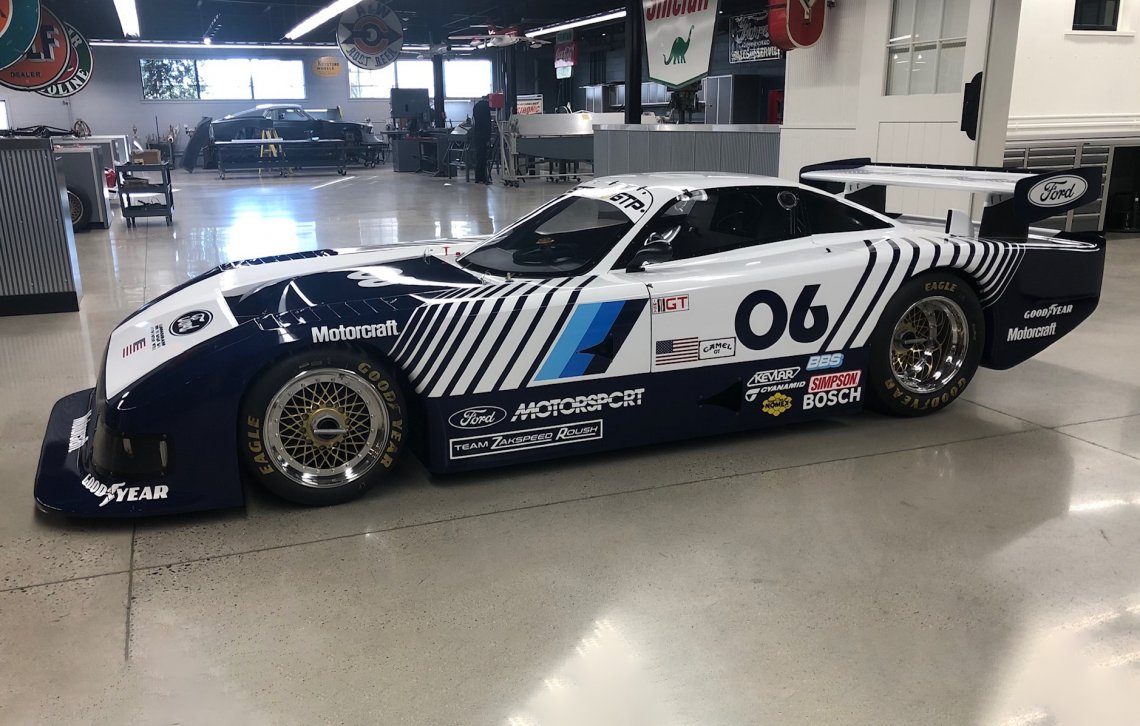
In the early 1980s, IMSA’s Camel GT Championship racing series provided the top manufacturers and best drivers with opportunities to compete at the highest level of sports car road racing. The race cars in the GTP (GTPrototype) class were the fastest and most sophisticated entries in the series, with Lola, Porsche, BMW, March and others making up the field. In 1983, a new American player in GTP, Ford, entered the ranks with a brand new car named the Mustang GTP. Not really a Mustang at all, it was an innovative, unexpected, total clean-sheet design from Bob Riley, widely regarded to this day as the best chassis designer in modern racing history. He broke with standard practice at a time when not a single GTP car had a front engine, placing the turbocharged 600-horsepower Zakspeed-built Ford 1.4-liter four-cylinder powerplant far forward in the chassis. Riley thus kept the underbody clear and allowed air to be directed through tunnels under the car, creating a heightened level of aerodynamic downforce not seen previously in GTP cars. In its first outing, at Road America, driven by Klaus Ludwig and Tim Coconis, the GTP outperformed the field, winning First Overall on a rain-soaked track. Through the balance of the season and in 1984, the GTP did not repeat its early success, but the car established Ford as a serious and formidable force in GTP.














